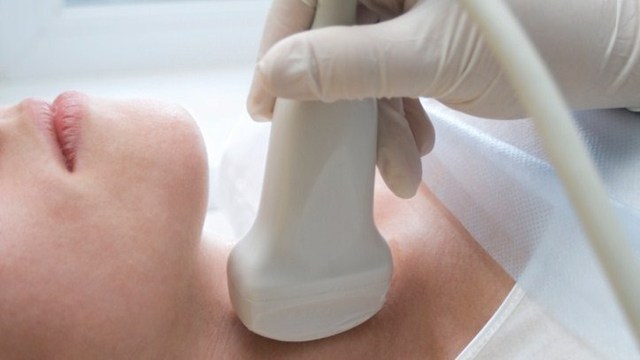First, let’s define what a thyroid nodule is. In layman’s terms, it’s a lump in the thyroid. What’s good to know is that according to the American Thyroid Association (ATA), most nodules are noncancerous or benign. Even so, it’s smart on the patient’s part to get any lumps present checked out by a medical professional.
What Causes Thyroid Nodules?
Basically, scientists aren’t quite sure. They do know that if you have hypothyroidism or if your diet lacks iodine, you are more likely to have nodules. Iodine deficiency is not a problem in the U.S., however. Sometimes, the thyroid develops an autonomous nodule; meaning, a nodule that secretes hormones whether your body needs it or not. Even so, nodules are quite common. In fact, the ATA reports that they are the most common endocrine problem in the U.S.
Symptoms and Diagnosis
You may not have any symptoms. The first time you discover you have thyroid nodules may be when the doctor tells you. This is after an examination, for example, through a routine physical. At this point, the task is to determine if it’s just a lump only or if there are other things involved. According to the ATA, the physician may be able to feel whether the entire thyroid is enlarged or if there is just a single nodule. Even though the majority of patients with nodules have normal functioning thyroids, doctors still order blood tests to rule out hypothyroidism.
And because it takes more than a physical examination and blood test to rule out cancer, a thyroid fine needle biopsy, a thyroid scan and sometimes even a thyroid ultrasound is utilized. The thyroid fine needle biopsy is done in the doctor’s office. Local anesthesia is commonly used. The doctor will take cells from the nodule(s).
These cells will be sent to a pathologist. When a thyroid scan is used, small amounts of radioactive substance (radioactive iodine, for instance), helps with capturing an image of the thyroid gland. Because of the radioactive iodine, the normal thyroid cells show up every time, but if there’s cancer; these won’t show very well at all.
Lastly, a thyroid ultrasound also is used to take a picture or image of this gland. The ultrasound gives the doctor an idea of whether the nodule is healthy or cystic. It even determines the dimensions of the nodule. Also, if the nodule can’t be felt during a physical examination, the ultrasound can find it.
Treatment
Any nodules that are cancerous or deemed highly suspicious of containing cancer, the ATA reports that these are promptly removed by an experienced thyroid surgeon. It is reassuring to know that in the case of thyroid cancers, most are curable. What if the nodule is found to be benign? Then surgery may be not needed unless the nodule begins to grow at an unusual rate. Some noncancerous nodules have been noted to grow so large, that breathing is restricted. Consequently, surgery would be recommended. If this is not the case, only monitoring is needed.
Also, for a bit of light reading about the struggles of diet, please read the following:
http://www.associatedcontent.com/article/2057637/good_diet_gone_bad.html?cat=5
And for empowering poetry about women, please click the following link:
www.blurb.com/my/book/detail/623276




Add a CommentComments
There are no comments yet. Be the first one and get the conversation started!